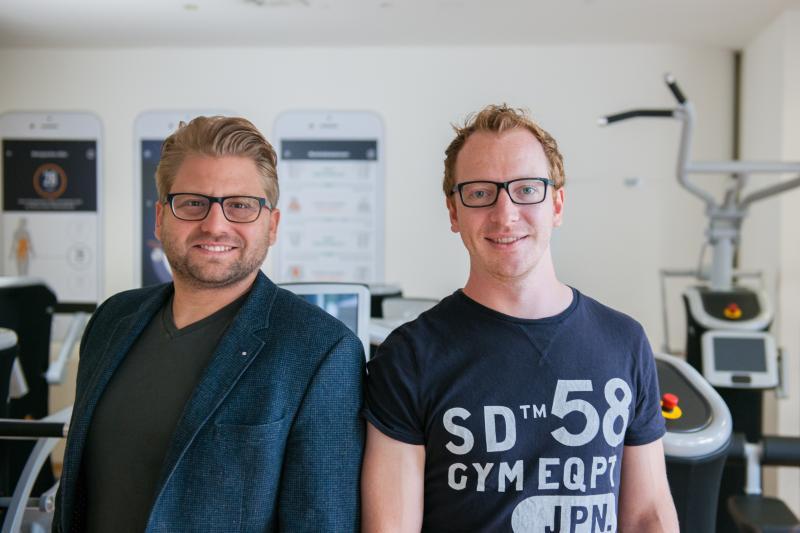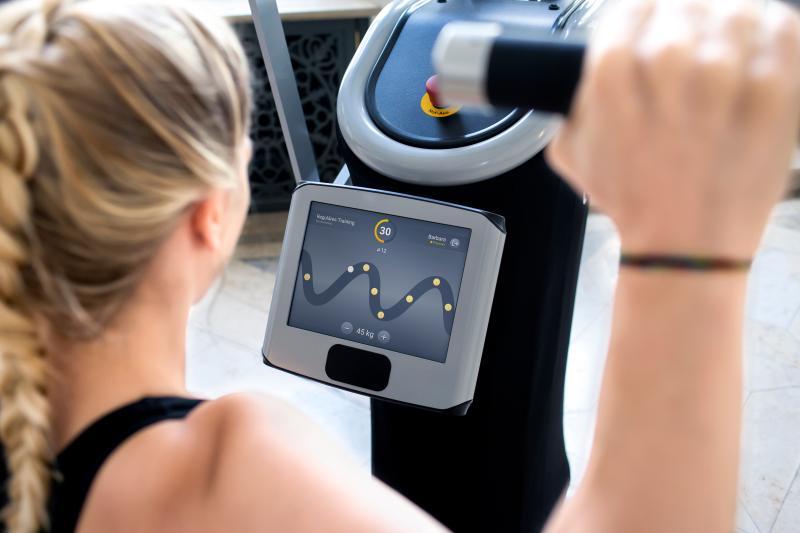German firm’s advanced digital strength machines and software pull the gym experience out of the 1970s and into the future
It looked complicated and dirty. There were strange odours and nothing seemed like much fun.
These were Philipp Roesch-Schlanderer’s impressions after visiting a fitness gym for the first time eight years ago. He was an exchange student at Columbia University in New York at the time, and he was slightly overweight. He wanted to spend a few hours a week sweating over a stationary bicycle or the treadmill, or pumping free weights.
“What I entered was an aging, smelly gym in a basement,” he says. “The equipment was outdated and dusty. I didn’t know where to start, how to adjust the machines, how long to work out. I wondered why the world had changed so much through technology, but the gym was stuck in Arnold Schwarzenegger’s era.”
Merging machines and apps
Roesch-Schlanderer’s hardships led him to return to Germany and create eGym, a company that marries apps and software with advanced fitness machines that connect to the cloud, making workouts interactive and entertaining. EGym, launched in 2013, offers 18 electronic machines that adjust automatically to each person’s goals and capabilities. Today, more than 1,000 gyms in Europe and the US use eGym’s technology.

Philipp Roesch-Schlanderer, left, and Florian Sauter started eGym because they felt fitness gyms had fallen far behind today’s technology.
EGym wants to persuade the everyday person to work out regularly.
“The company does not target the big, muscular people,” says Antonello Locci, a lead economist at the European Investment Bank. “It is looking for a wider group of people who need motivation to meet their training goals and who respond to innovation.”
The EIB signed a EUR 25 million deal in December to help eGym develop more innovative products, expand research, improve its production plant and attract clients. The financing is backed by the European Fund for Strategic Investments, an EU program targeting innovative companies and fighting low levels of investment in Europe. EFSI assists firms that are considered risky because their technology often has a limited track record. Many commercial banks won’t offer the type of growth capital companies such as eGym need to be successful.
A stronger fitness market
Cristian Antoci, the EIB investment officer in charge of the eGym transaction, is optimistic about the company’s future, despite the intense competition in the fitness industry. The company, he says, is proving there is a new market for fitness.
“Almost everyone has experienced this – you go to the gym and you’re quite intimidated, because most guys there are super fit,” Antoci says. “Then you are put off and never go back. But with eGym machines and the company’s app and software, you have fun. You touch the machine with a badge and you are guided through everything you need to do. You have all your results and feedback immediately. It’s addictive.”
EGym’s main offerings are:
- 18 electric strength machines for all major muscle groups
- Fitness software that automatically creates training programs based on a person’s goals and physical condition
- EGym apps for trainers and gym members, allowing the two sides to communicate more effectively
- EGym ONE, an open-cloud online platform that integrates third-party fitness devices with eGym’s training system
Connected wherever you are
“What’s really innovative is that all the eGym components are connected wherever you work out,” Roesch-Schlanderer says. “The machines recognize who you are and adjust immediately based on your past strength tests, your muscle goals, your weight loss, etc.”
The machine’s electric motors provide the resistance, rather than physical weights. The machines’ displays let people view their workout history, plan training, connect with friends and synchronize with smartphones or wearable devices like Fitbit and Jawbone. On the company’s workout app, users collect points based on how much exercise they do in or outside the gym.
Let’s play a game
To keep people from quitting, eGym takes advantage of a term known as gamification, which is the use of game principles in non-game settings. Gamification incorporates elements of game playing, such as scoring points, competition and rules of play, to encourage the use of a product.
“Before eGym, training at the gym was like playing football without counting goals,” says Roesch-Schlanderer. “What could be more boring?”
With eGym, a digital training curve is displayed on the machines’ monitors. Users have to stay within the boundaries of this curve during workouts. A ball moving through this curve eats pellets and users collect points – similar to the classic Pacman game. The more points collected, the bigger and brighter the ball gets.

On the eGym machine displays, a ball moves through a curve eating pellets, like in a Pacman game.
It may sound ridiculous, but…
Gamification sounds silly, but it works, say Roesch-Schlanderer and the EIB experts. Such motivation tactics are needed in fitness.
“Keeping members is a big challenge for a gym,” Antoci says. “Many people go and then they quit after a few sessions.”
The fitness industry’s churn rate, which is the amount of people who quit working out after signing up for a gym membership, is 30 to 40 percent.
“Member churn is the one of the most critical challenges for gyms,” Roesch-Schlanderer says. “If customers don’t reach their training goals or lose their motivation, they’ll quit, which in return makes sustainable growth almost impossible for gym operators.”
EGym practices what it preaches in the area of laid-back fitness. Its more than 300 employees are encouraged to live healthful lives, but the company says that being happy is most important. It offers free fruit to its Munich staff and keeps track of the number of bananas eaten (about 160 a week), but it also hands out free beer and coffee, makes pancakes with syrup for everyone, and has no dress code.
“Don’t tell anyone, but I have my own secret stash of chocolate and cookies in my office desk drawer,” Roesch-Schlanderer says. “I like to say, eat as much chocolate as you like and then start using our eGym program!”
